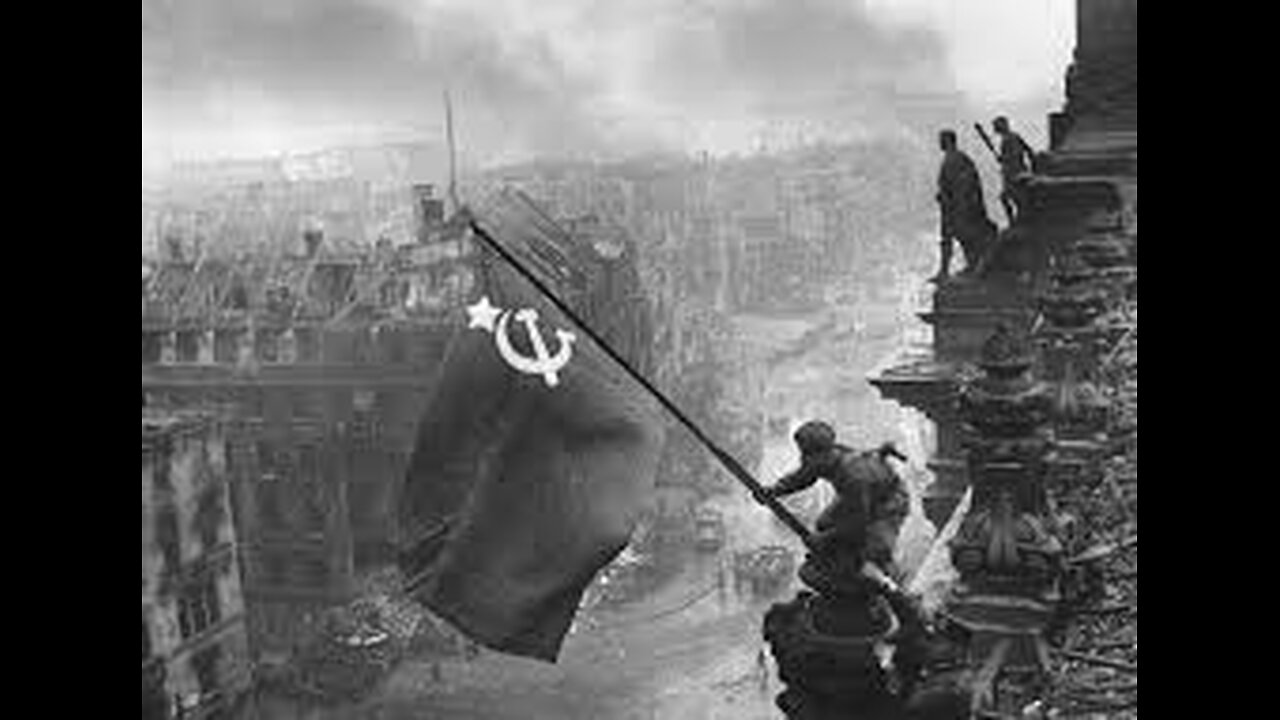Premium Only Content

Fall of Berlin
The Fall of Berlin typically refers to the Battle of Berlin, which was one of the final major offensives of World War II in Europe. It marked the defeat of Nazi Germany and the collapse of the Third Reich. The battle took place between April 16 and May 2, 1945, culminating in the capture of Berlin by Soviet forces and the suicide of Adolf Hitler. Here's a detailed overview of the key events:
1. Background
By early 1945, Germany was surrounded on multiple fronts:
The Allies (mainly American, British, and French forces) were advancing from the west, having crossed the Rhine River and moved deep into German territory.
The Soviet Red Army was advancing from the east, having pushed through Poland and into eastern Germany after the successful Vistula-Oder Offensive.
The Soviets, under the leadership of Joseph Stalin, prioritized capturing Berlin for both military and symbolic reasons. Stalin wanted to ensure Soviet dominance over postwar Germany and Europe. The capture of Berlin would also solidify the USSR's influence in the region.
2. The Battle of Berlin (April 16 - May 2, 1945)
The battle began with two main Soviet army groups converging on Berlin:
The 1st Belorussian Front, led by Marshal Georgy Zhukov, attacked from the north.
The 1st Ukrainian Front, under Marshal Ivan Konev, advanced from the south.
On April 16, 1945, the Soviets launched their assault on the Oder-Neisse line, using an intense artillery barrage, and began to push towards Berlin. Despite strong German resistance, including forces from the Wehrmacht, the SS, and even hastily assembled units of the Volkssturm (a militia made up of old men and young boys), the Soviets overwhelmed the German defenses. They encircled the city by April 25, sealing off any hope of relief.
3. Inside Berlin
As the Soviet forces closed in, the situation inside Berlin became desperate:
Adolf Hitler refused to leave his bunker under the Reich Chancellery and continued to direct a hopeless defense, believing that relief forces would arrive. However, these forces were either non-existent or unable to break through Soviet lines.
Joseph Goebbels, Hitler's propaganda minister, and other top Nazi officials joined him in the bunker, making their last stand.
Berlin's defenders included not just regular army soldiers but also Hitler Youth, elderly men, and untrained civilians, all of whom were poorly equipped to face the Soviet onslaught.
4. The Final Assault and Hitler's Suicide
By April 29, Soviet forces were storming the city center, and street-by-street fighting erupted as they approached the Reichstag (German parliament building). On April 30, 1945, with Soviet troops only a few blocks away, Adolf Hitler committed suicide alongside Eva Braun, his long-time companion, whom he had married the day before.
After Hitler's death, Grand Admiral Karl Dönitz briefly took over as head of state in the north, but the German military situation was untenable.
5. German Surrender in Berlin
After Hitler's death, German forces continued to resist but were rapidly losing ground. General Helmuth Weidling, who was in command of the Berlin defense forces, finally surrendered to the Soviets on May 2, 1945. The Red Army took full control of Berlin, and the remaining German forces were captured or surrendered.
6. Aftermath and Impact
Germany's unconditional surrender followed a few days later, on May 7-8, 1945 (V-E Day or Victory in Europe Day).
Berlin's capture marked the definitive end of Nazi Germany and led to the division of Germany and Berlin into occupation zones controlled by the Allied powers (the United States, the Soviet Union, the United Kingdom, and France).
The Soviet Union suffered heavy losses, with estimates of 70,000 to 80,000 soldiers killed and hundreds of thousands wounded in the Battle of Berlin.
The city of Berlin was left in ruins, with a significant portion of its infrastructure destroyed and many civilians dead or displaced.
The fall of Berlin and the end of World War II in Europe set the stage for the Cold War rivalry between the United States and the Soviet Union, with Berlin becoming a symbol of that division.
The Battle of Berlin stands as one of the most decisive and brutal battles in history, marking the end of the most destructive conflict in human history and the collapse of the Nazi regime. It is remembered as a moment of great suffering, but also as the turning point that brought about the end of World War II in Europe.
-
 LIVE
LIVE
RyanMatta
1 day ago $1.01 earnedOPERATION AMBER ALERT | CHILD TRAFFICKING DOCUMENTARY | EXECUTIVE PRODUCER RYAN MATTA
400 watching -
 14:14
14:14
TimcastIRL
1 day agoJoe Rogan ROASTS The View For Saying He BELIEVES IN DRAGONS In HILARIOUS MOCKERY
42.4K71 -
 2:17:04
2:17:04
Side Scrollers Podcast
5 hours agoDoc Disrespect ON RUMBLE, PlayStation To Rival Nintendo | Side Scrollers
17K4 -
 12:04
12:04
Silver Dragons
2 hours agoGAME CHANGING NEWS FOR SILVER
6.06K1 -
 49:43
49:43
Ben Shapiro
3 hours agoEp. 2092 - Trump Makes His FINAL PICKS
56K33 -
 1:06:49
1:06:49
Russell Brand
4 hours agoIs Elon Musk Taking Over MSNBC?! + Trump's Executive Order Plan – SF500
139K205 -
 1:57:39
1:57:39
The Charlie Kirk Show
3 hours agoThe Fake Tulsi Smear + Is Canada a Free Country? (No) + Why Trump Is Winning | Mullin | 11.25.24
98.9K26 -
 27:42
27:42
Stephen Gardner
3 hours ago🔥Blackmail Scheme ROCKS Trump's RFK Pick!
63K40 -
 59:57
59:57
The Dan Bongino Show
8 hours agoGeraldo Wants To Fight Me Again? (Ep. 2377) - 11/25/2024
831K2.87K -
 1:06:06
1:06:06
The Rubin Report
4 hours agoBill Maher Makes Neil deGrasse Tyson Go Silent with His Proof of Failing Science
91.4K81